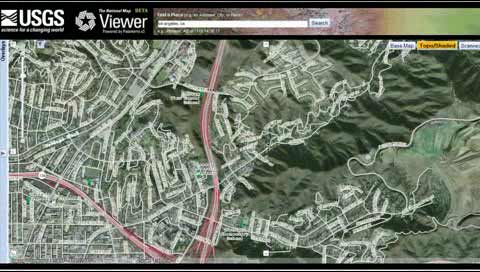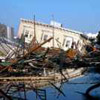USGS Frequently Asked Questions
Navigation
- Home
- All categories
- Basics About USGS
- Biology
- Climate
- Earthquakes
- California Earthquakes
- Did You Feel It?
- Earthquake Effects & Experiences
- Earthquake Myths
- Earthquake Preparedness
- Earthquakes & Volcanoes
- Earthquakes Induced by Fluid Injection
- Earthquakes, Plate Tectonics, Earth Structure
- Faults
- Historical Earthquakes & Statistics
- Latest Earthquake Map & Information
- Measuring Earthquakes
- Northern Sumatra M9.0 Earthquake
- Nuclear Explosions & Seismology
- PAGER
- Probabilities, Seismic Hazard & Earthquake Engineering
- Web Apps - EQ Hazards & Engineering Design
- Education
- Energy
- Geology
- Glaciers
- Health and Disease
- Jobs
- Landslides
- Maps and Mapping
- Publications and Photographs
- Recreation
- Remote Sensing and Imagery
- Tsunamis
- Volcanoes
- Water
- Ask USGS
- View Tag Cloud
Popular Media
USGS Frequently Asked Questions Spotlight 
How is the USGS involved in assessing the Nation's energy resources?
The USGS conducts energy resource assessments on "traditional resources" (gas, oil, coal) - but also on alternative energy resources such as geothermal and methane hydrates. The following links provide more information:
Gas hydrate (methane clathrate) FAQs
02-01-2013
Popular FAQs

- How can I search for and order historical USGS topographic maps?
In 2010-12 the USGS scanned its entire library of topographic quadrangle maps. Nearly 180,000 maps have been published in GeoPDF and are available to the public free of charge. This set of GeoPDF files is referred to as the Historical Topographic Map... - I want to buy a topographic map. How do I get it?
You can purchase topographic maps several ways: Download or online from the USGS Store at http://store.usgs.gov Click on Maps in the left margin or click on the Map Locator near the center of the screen. Topographic maps in GeoPDF format are avail... - Does the USGS monitor global warming?
Not specifically. Our charge is to understand characteristics of the earth, especially the earth's surface, that affect our Nation's land, water, and biological resources. That includes quite a bit of environmental monitoring. Other agencies, espec... - Where can I find current earthquake lists and maps?
Go to the Earthquake Hazards Program Real-time Earthquake Map. ... - How do I access the online USGS Publications Warehouse?
The USGS Publications Warehouse (http://pubs.usgs.gov/) has released a new interface and a variety of new content and features. The new version of this tool now includes citations for USGS-authored content including journal articles, books, book chap... - Where does the USGS monitor stream water quality in real time? How can I see these sites on a map and get to the data?
Continuous real-time water quality information is at http://water.usgs.gov/waterwatch/wqwatch/. These data are limited to measurable characteristics such as temperature, turbidity, specific conductance (salinity), dissolved oxygen, and pH (acidity). Wate... - Is there water under the ground?
Yes. The main body of subsurface water is found in the saturated zone of aquifers. Aquifers can be only a few feet below the surface or more than a thousand feet deep. Aquifers are the primary source of drinking water in arid and semi-arid parts of the U... - What is USGS WaterALERT?
The U.S. Geological Survey WaterAlert service sends e-mail or text messages when certain parameters measured by a USGS data-collection station exceed user-definable thresholds. The development and maintenance of the WaterAlert system is supported through t... - What is the difference between a tsunami and a tidal wave?
Although both are sea waves, a tsunami and a tidal wave are two different unrelated phenomenona. A tidal wave is a shallow water wave caused by the gravitational interactions between the Sun, Moon, and Earth. A tsunami is a sea wave caused by an underwater... - What is the Earth's "water cycle?"
The water cycle, also known as the hydrologic cycle, describes the continuous movement of water on, above, and below the surface of the Earth. For a summary go to water cycle. Learn more at http://ga.water.usgs.gov/edu/watercycle.html. ...





